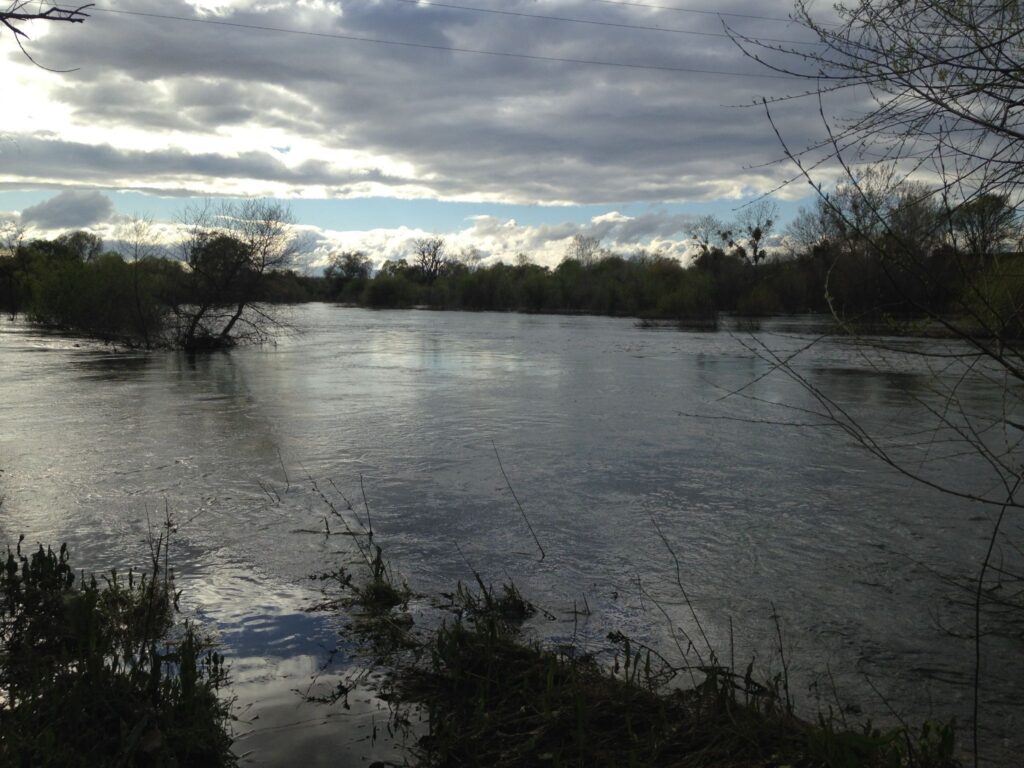
Example of substantial floodplain inundation on the lower Tuolumne River downstream of La Grange, taken March 27, 2019. Flow was 6,000 cfs at La Grange. Image: Chris Shutes
On November 5, 2025, Chris Shutes, Executive Director of the California Sportfishing Protection Alliance (CSPA), made a presentation to the State Water Resources Control Board (Board) in general support of the Draft Scientific Basis Report Supplement for the Tuolumne River Voluntary Agreement Proposal (Draft Supplement). The presentation used examples from the Draft Supplement to show that the available science supports using a percent of unimpaired flow as the basis for flow standards for the lower Tuolumne River.
On November 7, CSPA followed up with written comments on the Draft Supplement, which equally concluded that the available science does not support the proposed Tuolumne River Voluntary Agreement.
The Draft Supplement is a scientific analysis of the hydrology and fisheries of the Lower Tuolumne River. This document supplements the 2016 Scientific Basis Report for lower San Joaquin River flow and salinity. The 2016 Report emphasized that flow is the “master variable” that determines the success of fish populations, and that there is no substitute for flow.

Floodplain inundation on the lower Tuolumne River near Waterford, taken March 27, 2019. Flow was 6000 cfs at La Grange. Image: Chris Shutes.
The Tuolumne River Voluntary Agreement (TVA), in contrast, proposes only very small increases in required flow in the lower Tuolumne River. Instead, it proposes to use “non-flow” actions like gravel supplementation, engineering new floodplains, and removing fish that eat salmon. Both CSPA’s presentation and comments cite the Draft Supplement to show the shortcomings of the TVA approach.
CSPA’s presentation and comments also include recommendations for improving the final Supplement.
CSPA was joined in presentations by colleagues from Friends of the River, San Francisco Baykeeper, Golden State Salmon Association, and the Yosemite Rivers Alliance (formerly the Tuolumne River Trust). Each of these presentations addressed specific points and data raised in the Draft Supplement.
In contrast, representatives of the proponents of the TVA used the Board workshop to say that the Draft Supplement totally vindicates their proposal, which it does not. The proponents also engaged in various sales pitches about how the Agreement is beneficial.
Many speakers that followed the panel presentations made articulate points about what the Draft Supplement says and how it supports a percent-of-unimpaired flow approach.
A video of the workshop is available. Shutes’s testimony starts at 4 hours and 55 minutes into the workshop, at the 4:55:00 minute mark, and continues through to 5:09:00.
